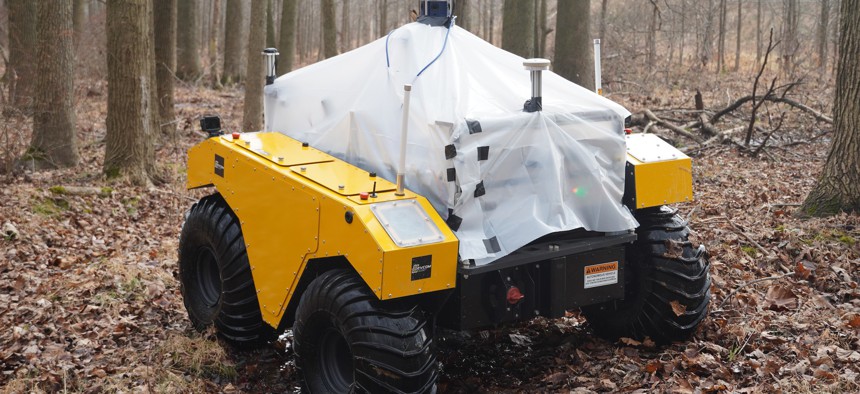
US Army
US Army Tests Autonomous Vehicle in Maryland
Researchers aim to better understand how the self-moving machines respond to real-world challenges.
U.S. Army researchers recently began experimenting with unmanned, autonomous vehicles on land that was used to test munitions and weapons almost 100 years ago.
About 200 acres across the Aberdeen Proving Ground in Middle River, Maryland, now make up a modern military study site, where Army Research Laboratory officials are working to prove and refine the performance of the software framework and algorithms created to explore systems’ intelligence—and enable machines’ abilities to carry out specific tasks.
“The one-of-its-kind research campus was established to advance Army knowledge of autonomy and intelligent systems through basic and applied research of unmanned technologies that integrate artificial intelligence, autonomy, robotics and human teaming elements in complex environments,” Jeffrey Westrich, an ARL program manager said in a statement Thursday.
Self-moving vehicles and robots hold potential to accomplish acts that could put troops’ lives at risk if done manually.
According to ARL’s release, scientists “performed the first fully-autonomous tests onsite using an unmanned ground vehicle testbed platform, which serves as the standard baseline configuration for multiple programmatic efforts within the laboratory,” earlier this year. A video spotlighting the work revealed the investigations were designed explicitly to capture sensory data about elements like fallen branches, rocks or bumpy terrain that can pose real problems for such robots operating in the real world.
Generally, Army researchers have turned to simulations to evaluate artificial intelligence-enabled systems and autonomy. But these ongoing and in-the-making tests in the historic, natural environment could help humans better grasp how the self-moving machines actually behave in real settings—and make the computer-based models stronger.
“We can utilize those results as a comparative metric for improving simulation, and informing research and development through an iterative improvement approach,” Westrich said. “This location promises a substantial role in accelerating our understanding of robotics research, and pursuing significantly more complex experimentation in the future.”




